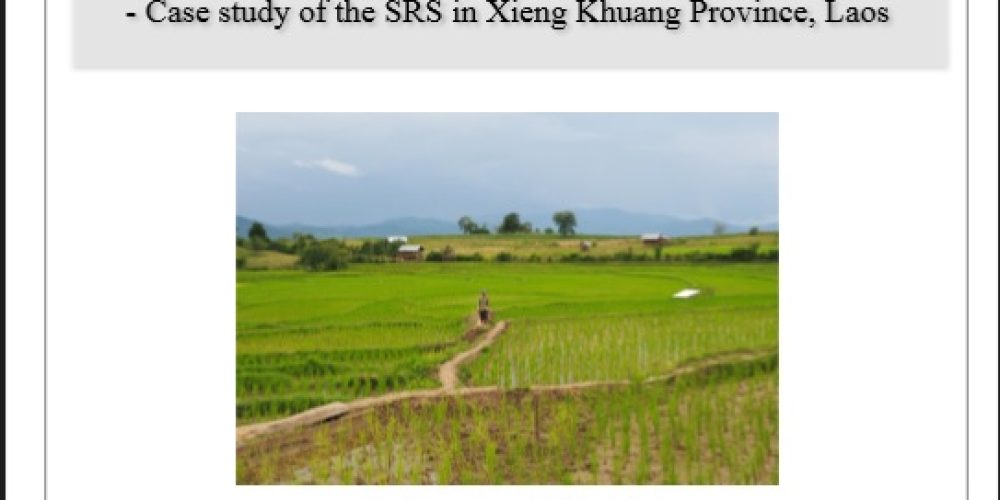
Download Info

- Author: ALiSEA teams
- Views: 779
- File size: 5.04 MB
- Downloads: 10
- Updated: March 2, 2018
- Categories:
Title of document: What place for an agroecological rice technique in rain fed lowland rice systems? - Case study of the SRS in Xieng Khuang Province, Laos
Authors:
Journal’s name if any:
Ministry/Government Agency/Organisation: ISTOM, CTI, GRET
Year of publication: 2017
Geographic focus: Lao PDR
Main issues / topics addressed (for example: Context of the study of the System of Rice Intensification; Methodological framework and Data collection; Results: Dissemination, adoption and performance of SRS; Discussions and conclusion ……)
School of agroecology (if any):
Web address to original document (if any):
Summary:
With the growing concern about food security in the northern part of Laos, it is critical to address the issue of sustainable intensification of food production, especially the staple food: rice. In this context, the presented study is designed to evaluate the performance and sustainability of a recent agro-ecological rice cropping technique, named the Sustainable Rice System (SRS). This innovation, introduced in rain-fed lowland systems, is compared to traditional rice growing practices in the study area of Kham District, Xieng Khuang Province. The conduction of the study goes through the understanding of real diversity of practices, which has the result of a distinction between one-seedling practices, named as SRS, and the multipleseedling practices. Then, the emphasis on the SRS group demonstrates its status in the area as well as the benefits and disadvantages. In order to assess the sustainability of the SRS, the study tries to go beyond only using the “yield” indicator as the “be all and end all”, through the three mainstays dimensions of agro ecology; Social, Economic and Environmental. This shows that, even if the yield is not the primary benefit of the technique, farmers are still interested in adopting it as it provides other benefits. Nevertheless, all of the effects are not positive, and the durability of the technique does not seem to be fully guaranteed. This study therefore introduces many key answers to the questions addressed and presents a first overview to pave the way for following studies.

